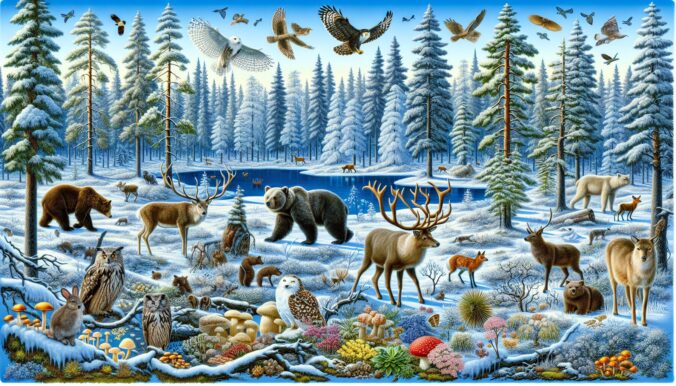Finland is known for its stunning natural landscapes, from lush forests and pristine lakes to rugged coastlines and vast wilderness areas. But beyond its picturesque scenery, Finland is also home to a rich diversity of biological species that play a vital role in maintaining the health of its ecosystems.
One of the key factors contributing to Finland’s biological diversity is its unique geographical location. Situated in Northern Europe, Finland experiences a range of different climates, from temperate in the south to subarctic in the north. This diverse range of habitats provides a home for a wide variety of plant and animal species, many of which are endemic to the region.
In fact, Finland is home to over 60,000 species of plants and animals, including around 4,500 species of vascular plants, 640 species of birds, and 70 species of mammals. Some of the most iconic species found in Finland include the brown bear, the elk, the lynx, and the Saimaa ringed seal, which is one of the most endangered seal species in the world.
One of the key habitats that supports Finland’s biological diversity is its extensive boreal forests, which cover around 75% of the country’s land area. These forests are home to a wide variety of plant and animal species, including many that are considered to be threatened or endangered. Protecting these forests is crucial for maintaining Finland’s biodiversity and ensuring the health of its ecosystems.
In addition to its forests, Finland’s numerous lakes and wetlands also play a vital role in supporting its biological diversity. These habitats provide a home for a wide variety of aquatic plants and animals, including many species of fish, amphibians, and waterfowl. Finland’s vast coastline is also teeming with life, with seals, seabirds, and marine mammals all calling the Baltic Sea home.
Despite its rich biological diversity, Finland faces a number of threats to its ecosystems and the species that inhabit them. Climate change is one of the biggest challenges, with rising temperatures and changing weather patterns affecting the distribution and abundance of many species. Pollution, habitat destruction, and overexploitation of natural resources are also putting pressure on Finland’s biodiversity.
Fortunately, Finland has taken steps to protect its natural heritage and promote sustainable use of its resources. The country has established a network of national parks and nature reserves, which provide a sanctuary for many rare and endangered species. Conservation efforts are also underway to protect key habitats and species, such as the restoration of wetlands and the conservation of the Saimaa ringed seal.
As the world grapples with the challenges of climate change and biodiversity loss, Finland serves as a shining example of how a country can work to protect its natural heritage and promote sustainable development. By safeguarding its biological diversity, Finland is not only preserving its ecosystems for future generations but also contributing to the global effort to conserve the planet’s biodiversity.
In conclusion, Finland’s rich biological diversity is a testament to the country’s commitment to preserving its natural heritage and promoting sustainable development. From its boreal forests to its pristine lakes and wetlands, Finland’s ecosystems are home to a wide variety of plant and animal species that play a vital role in maintaining the health of its environment. By working together to protect its biodiversity, Finland is setting an example for the rest of the world to follow in the fight against climate change and biodiversity loss.

